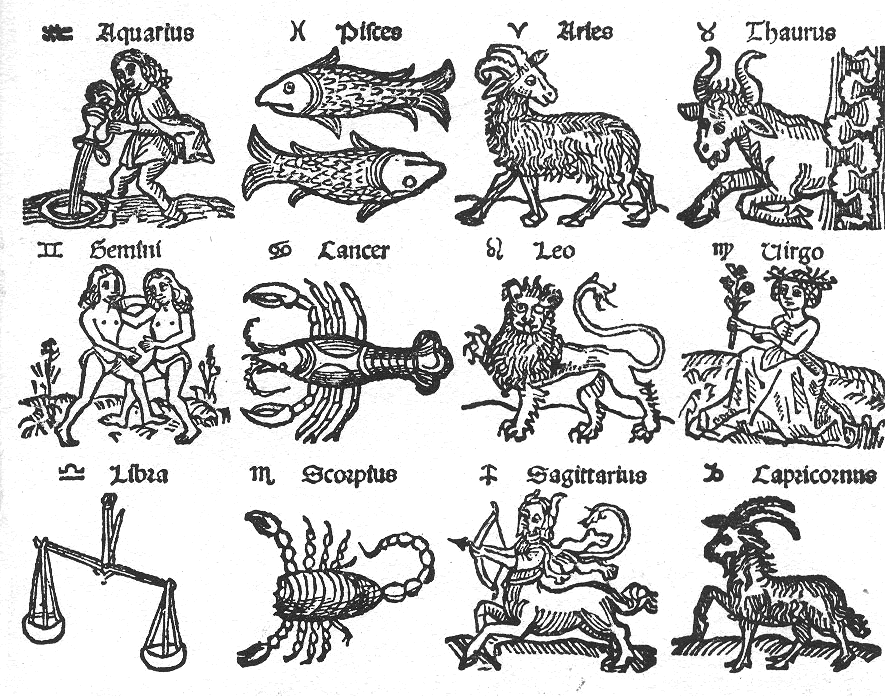How does Mercury Retrograde affect your zodiac sign? Here is a list of all 12 astrological signs, from Aquarius and Pisces to Sagittarius and Capricorn, and a brief summary of how the planet of communication and cognitive function will influence you and your life! Let’s answer the age-old question, “How Will the Mercury Retrograde Affect Me?”
What happens when Mercury is in retrograde? During Mercury Retrograde, the planet nearest the Sun appears to be spinning backward; ancient astrologers believed that the patterns of the cosmos influenced our own lives. Thankfully, Mercury Retrograde only happens a few times a year as part of your annual solar journey! Learn more about Mercury Retrograde and see this year’s Mercury Retrograde dates.

Mercury Retrograde Effects by Zodiac Sign
When Mercury enters retrograde motion within the range of dates for a given astrological sign, be wary of the listed effects.
Note that the planet Mercury rules both Gemini and Virgo, so these two signs are most heavily affected.
IN AQUARIUS (Jan 20–Feb 18): With Mercury retrograde in Aquarius, the sign governing relationships and friendships is at risk. Petty squabbles, misunderstandings, and miscommunications abound. Know who your friends are.
IN PISCES (Feb 19–Mar 20): Foggy thinking, daydreams, and escapism are the norm; day-to-day realities confound otherwise clear heads when Mercury, the planet that rules logic, is in Pisces, which governs illusion. Practice creative pursuits—writing, dancing, photography, film, or painting.
IN ARIES (Mar 21–Apr 19): Expect to be frustrated and frazzled. Assertive, impulsive Aries wants to move ahead, and all of the energy is going backward. Watch what you say and how you say it. Pay attention to what people say; you might be pleasantly surprised.
IN TAURUS (Apr 20–May 20): Formulate your thoughts. Taurus, an unhurried sign, slows down the mental processes. He also governs banking, so delay money matters. Review financial matters and position yourself for growth.
IN GEMINI (May 21–Jun 20): Because Gemini rules communications, be prepared for miscommunications when Mercury is in this sign. Expect lots of phone calls or none, as well as lost or misplaced mail. You may not articulate clearly, and gossip abounds. Old friends may reconnect.
IN CANCER (Jun 21–Jul 22): Expect annoyances at home with baking, gardening, and household duties under domesticated Cancer. Complete repair projects that weren’t finished or done correctly.
IN LEO (Jul 23–Aug 22): Avoid speculative investments. It is not a good time to buy, sell, or trade. Instead, analyze your investment portfolio. Use your know-how and advisory skills to help friends and associates.
IN VIRGO (Aug 23–Sep 22): Challenging situations arise, especially in the workplace. Expect product delays, equipment breakdowns, and crankiness among coworkers under finicky, detail-oriented Virgo. Double-check your work before you call it finished.
IN LIBRA (Sep 23–Oct 22: Accept your physical attributes; do not have a makeover. Indecision reigns, so limit purchases—or risk returning them. Libra, representing beauty, grace, charm, and diplomacy, is out of balance. Refresh, relax, and rejuvenate.
IN SCORPIO (Oct 23–Nov 21): Emotions rule—not common sense—so beware. Avoid affairs of the heart. Passionate Scorpio is also secretive, and your secrets may seep out. Keep them in a diary.
IN SAGITTARIUS (Nov 22–Dec 21): It is not a time to travel, so reschedule or expect delays, lines, and lost directions. Instead, take care of local affairs. Patience and a sense of humor are needed.
IN CAPRICORN (Dec 22–Jan 19): Avoid buying, selling, or renting real estate under Capricorn, the sign that governs property matters. Expect problems with paperwork, packing, and movers. Reunite with family or vacation at home.
Related: Find Your Zodiac Sign
There is a time to let things happen and a time to make things happen.
–Hugh Prather, American writer (b. 1938)

Planet Mercury and Astrology
In astrology, all of the planets’ attributes are rooted in ancient mythology. (Mercury is the name the ancient Romans gave to the Greek mythological god Hermes.)
In mythology, Mercury was the official messenger of the ancient gods and goddesses and, as such, governed communications. Mercury is depicted as a male figure with winged sandals and a winged hat, indicating the ability to travel quickly. Correspondingly, Mercury has the fastest orbit of all the planets in the solar system, taking 88 days to orbit the Sun swiftly.
Mercury’s name is also translated as the “keeper of boundaries,” as he travels between the upper and lower worlds and often guides souls to the underworld. As well as communication and travel, Mercury represents mental quickness, cognitive function, and reasoning. The flipside of Mercury’s cleverness and wit is cunningness. He is also recognized as a trickster, prone to misbehavior.
In 1782, Mercury became the first symbol of the United States’ fledgling postal service. Today, he is recognized as an icon of an international floral delivery service as well as the official symbol of the postal service of Greece.
In medicine, Mercury is associated with the nervous system, the brain, the respiratory system, the thyroid, and the sense organs. See The Man of Signs—a representation of how each astrological sign affects a different body part.
Learn all about your zodiac sign.













Comments